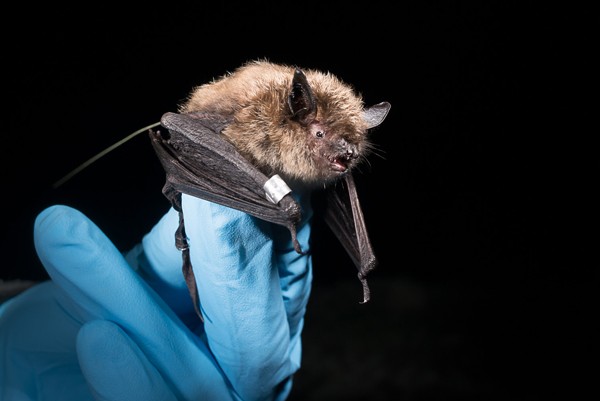Two bat species newly recorded as Alaska residents
December 24, 2014
907-474-6941
12/22/14

Two species of bats have been newly confirmed as Alaska residents, thanks in part to research conducted on specimens preserved among the collections at the University of Alaska Museum of the North.
The number of bat species known in Alaska has increased from six to eight with the publication of two studies in a special issue of the journal Northwestern Naturalist devoted to bat research in Alaska and Northwestern Canada. Mammal curator Link Olson (who co-edited the special issue), collection manager Aren Gunderson and two other authors re-examined specimens collected in the early 1990s from extreme Southeast Alaska and deposited in the UAMN mammal collection.
Olson said the bats were originally identified as the relatively common little brown myotis (Myotis lucifugus), which is both Alaska’s and North America’s most broadly distributed bat. The specimens bore some resemblance to the Yuma myotis (M. yumanensis), previously undocumented in Alaska but known from western British Columbia.
The two species are notoriously difficult to tell apart, despite being only distantly related, and are frequently misidentified even by experts. Using DNA extracted from dried skins, Olson and Gunderson confirmed that six specimens were actually M. yumanensis.

In a separate paper, Karen Blejwas of the Alaska Department of Fish and Game and two coauthors reported the first records of hoary bats (Lasiurus cinereus) from Southeast Alaska based on recordings of echolocation calls. Like the Yuma myotis, hoary bats are known from British Columbia but were previously undocumented in Alaska.
Olson said it is not know whether the two species are relative newcomers to the state or are longtime residents that have simply escaped attention until now.
"Scientists clearly have much to learn about Alaska’s bats," he said.
ON THE WEB: http://www.bioone.org/doi/abs/10.1898/1051-1733-95.3.173


